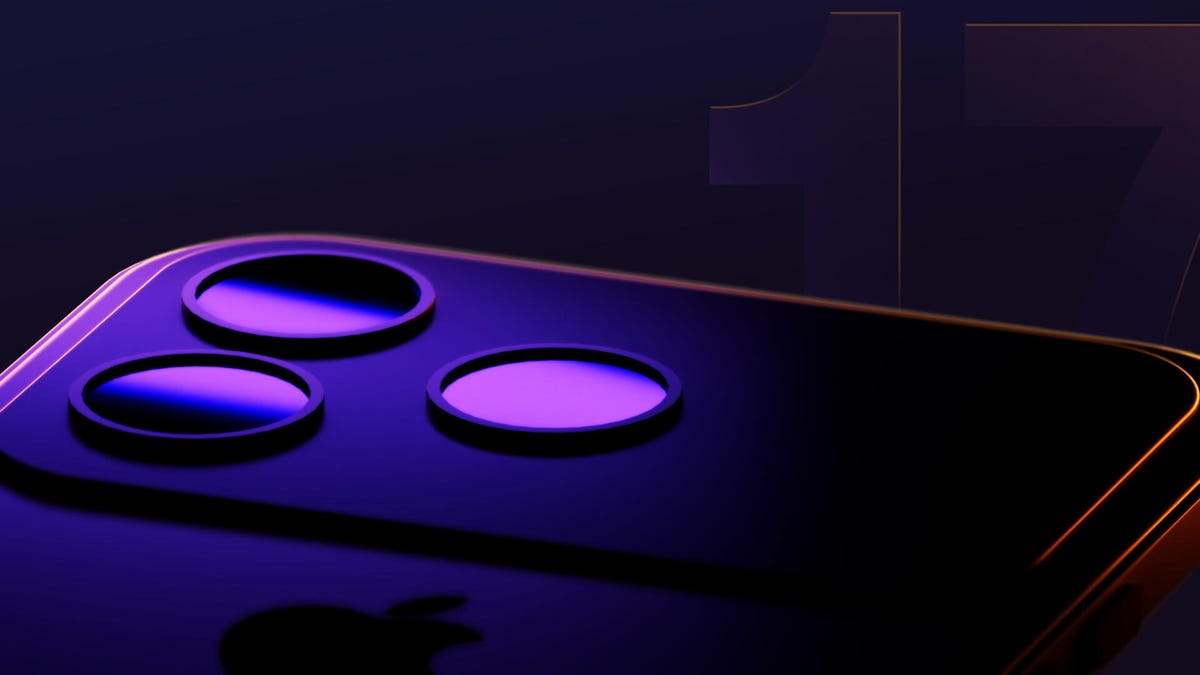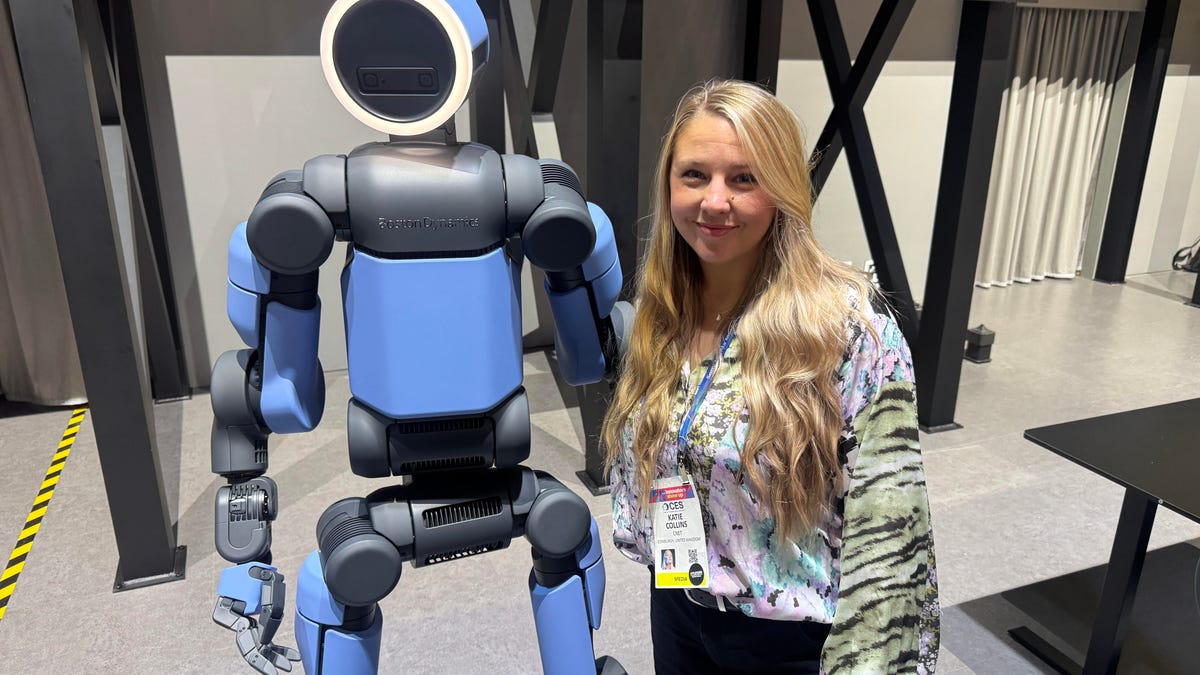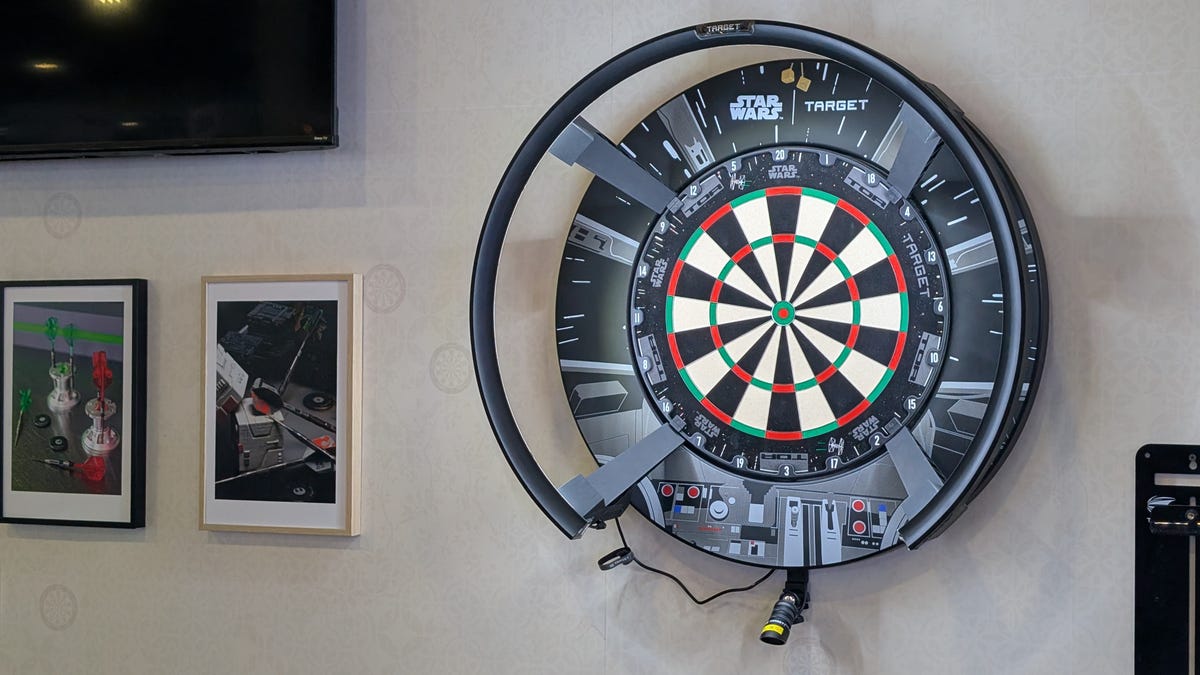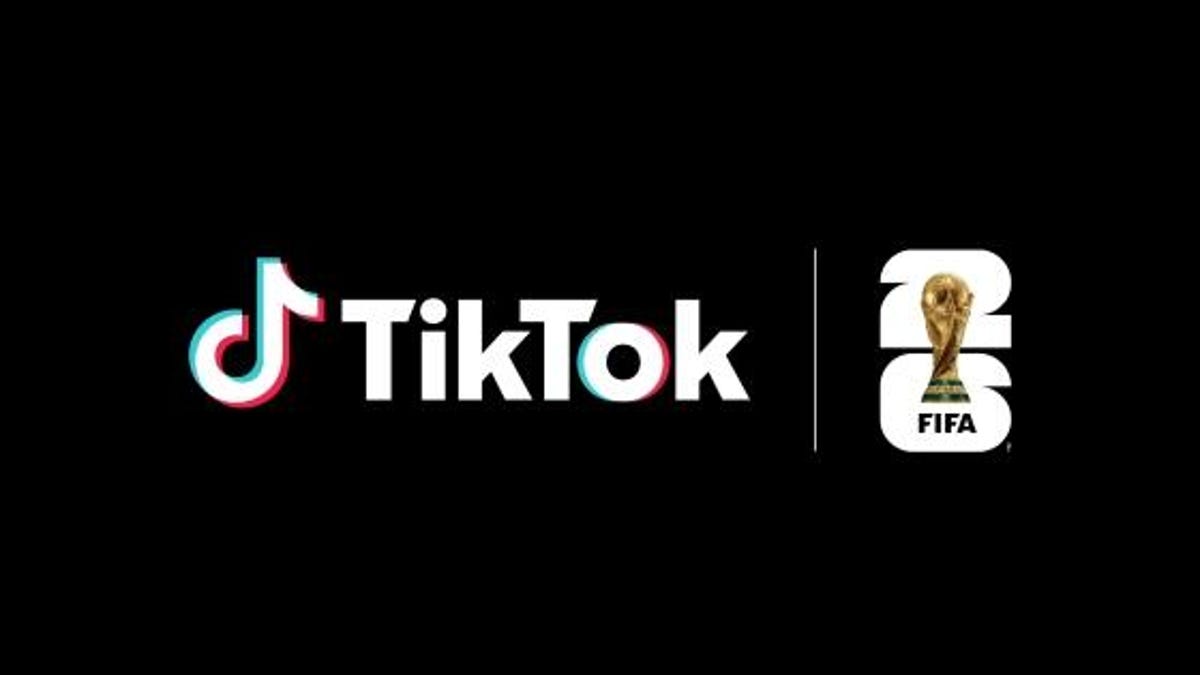Technologies
iPhone 17 Air Rumors: Everything to Know About Apple’s Slim Phone
The thinner handset could feature a 5.5mm profile and replace the iPhone Plus model.

As September approaches, we’re getting closer to learning whether Apple will unveil a super-thin iPhone with the rest of its upcoming lineup.
Apple hasn’t confirmed any details about the iPhone 17, but that hasn’t stopped the rumor mill from churning — especially as it relates to this supposedly thin new model, which has been dubbed the «iPhone 17 Air» in the meantime. It could serve as a successor to the iPhone 16 Plus, with a 6.6-inch display, making it smaller than the iPhone 16 Pro Max but bigger than the baseline and Pro models. It could also include higher RAM, new colors and a battery boost — thanks in part to iOS 26’s Adaptive Power feature.
Apple’s ultra-thin phone could be the latest to join a slew of skinny phones, including the Samsung Galaxy S25 Edge. But in its effort to slim down the device, Apple would likely need to make hardware trade-offs, which might include a single rear camera. Plus, there’s the possibility of a high price tag, which could also be impacted by tariffs.
The wait is almost over, but for now, we’re rounding up all the latest rumors, leaks and speculation about the new iPhone. Let’s dig in.
Read more: Should You Buy an iPhone 16 or Wait for the iPhone 17?
iPhone 17 Air size: How thin will it be?
If the rumored iPhone 17 Air lives up to its name, then the biggest potential advantage it could offer over the rest of the lineup is its size and weight. A Bloomberg report from March notes that the iPhone Air could measure 5.5mm thick, compared to the iPhone 16 Pro at 8.25mm. The iPhone 17 Pro Max could get as thick as 8.725mm to make room for a bigger battery, according to a report by 9to5Mac.
Matt Talks Tech posted a YouTube video on July 19 comparing the thickness of an iPhone 17 Air model with an iPhone 6, the last thinnest iPhone:
Mac Rumors reported in May that a leaker on the Korean-language Naver blog, going by yeux1122, said that the rumored iPhone 17 Air weighs approximately 145 grams (5.11 ounces). Compare that with the iPhone 16 Pro, which weighs 199 grams (7.03 ounces). If this rumor proves true, the Air would be just slightly heavier than the iPhone 13 mini, which weighs 141 grams (4.97 ounces).
iPhone 17 Air camera: Potential downgrade?
To slim down the iPhone, Apple may have to make some camera compromises.
In July, analyst Ming-Chi Kuo reiterated the long-standing rumor that the iPhone 17 Air will only feature one rear camera for wide-angle shots. That would place it in the same camp as the $599 iPhone 16E, which has a single rear camera with a 48-megapixel sensor — though it’s not clear if the iPhone 17 Air will have the same sensor. Bloomberg also noted earlier this year that the rumored Air may not have the ultrawide and 5x telephoto lenses that have become staples of Apple’s premium iPhones.
In a bit of good news, it’s also rumored that the front-facing «selfie» camera on all iPhone 17 models, including the Air, will be upgraded to 24 megapixels, according to analyst Jeff Pu.
In February, Front Page Tech shared a re-created render of the iPhone 17 Air, which supposedly includes a glimpse of the camera, in this video on YouTube:
Display: Smaller than a Plus, bigger than a Pro?
Rumor has it that the Air will have a 6.6-inch display, according to analysts Pu and Kuo, who also said the display resolution would be around 1260×2740 pixels. That aligns with the wallpaper resolution Macworld found in the second iOS 26 developer beta — a resolution that no existing iPhone currently has.
If rumors are accurate, the iPhone 17 Air’s display will be slightly smaller than the iPhone 16 Plus, which has a 6.7-inch display, but larger than the iPhone 16 Pro, which features a 6.3-inch display. The iPhone 16 Pro Max leads with a 6.9-inch display. It’s unclear if the iPhone 17 Air’s screen would be a Pro Motion display like the one found on iPhone Pro models.
Performance: Could an Air get the A19 Pro chip?
The iPhone 17 Air could benefit from some performance boosts.
Bloomberg reported back in March that the rumored phone will have a standard A19 chip, instead of the A19 Pro landing on the Pro versions. Kuo shared the same prediction as recently as July 24.
But a Weibo account known as Fixed Focus Digital said the iPhone 17 Air will come with an A19 Pro chip, MacRumors reported on July 9. But the Air would have a 5-core GPU, according to the rumor, whereas the iPhone 17 Pro and Pro Max would get a 6-core GPU.
Apple is also reportedly bringing more design in-house to improve connectivity across all devices. In February, Kuo said Apple will swap out Broadcom’s Wi-Fi chips for in-house chips across the iPhone 17 lineup.
iPhone 17 Air battery life expectations
One of the key challenges of slimming down a phone is figuring out how to not compromise battery life.
Initially, it was assumed that a skinnier iPhone would simply have reduced battery life, since there would be less space to house a battery. But more recently, AppleInsider reported that a skinnier iPhone might use a silicon-anode battery to help extend battery life.
Leaker Yeux1122 said the iPhone 17 Air’s battery capacity is 2,800mAh, based on details from a «mass production confirmed sample,» according to MacRumors. The leaker adds that a high-density battery in the Air could increase its «actual capacity» by 15% to 20%. Kuo also noted back in March that the phone could have that «high-density» battery.
If the rumored iPhone 17 Air does use the silicon battery technology, it would be the first iPhone to do so.
One feature that could help avoid battery drain is Adaptive Power in iOS 26. This can help conserve battery by automatically adjusting your iPhone’s performance based on how you’re using the it at that moment, according to Apple.
And while the appeal of a skinnier iPhone may be its sleekness, Apple could still release a battery case as an iPhone 17 Air accessory, according to a May report from Wayne Ma with The Information.
Memory upgrade
In April, Kuo noted the iPhone 17 Air will sport 12GB of RAM, just like the upcoming Pro models. (The baseline iPhone 17 is expected to stay at 8GB, according to both Kuo and Pu.) Tipster Digital Chat Station noted that the boost is largely thanks to the «large scale» use of Apple Intelligence and AI on the devices.
Colors for the iPhone 17 Air
Current rumors suggest the iPhone 17 Air come come in these shades:
- Black
- Blue gray
- Light gold
- Silver
On Aug. 3, Majin Bu posted photos on X of the predicted color lineup across the iPhone 17 series:
Which model and color will you choose this year? pic.twitter.com/AtDFutgSX0
— Majin Bu (@MajinBuOfficial) August 3, 2025
Dynamic Island: Front camera could move
Bloomberg’s report also notes that the iPhone 17 Air is expected to have superslim bezels compared to the rest of the line, along with a Camera Control button and a Dynamic Island cutout in the display.
Pu predicted in May that all the iPhone 17 models will use a new metalens technology for the proximity sensor, according to 9to5Mac. That technology could allow Apple to reduce the size of the Face ID sensor and its Dynamic Island. However, Pu’s report contradicts Kuo, who previously said that the Dynamic Island would remain «largely unchanged» in the iPhone 17 lineup compared to the iPhone 16.
In a post to X on June 26, Bu said the front camera might be placed on the left of the Dynamic Island, based on leaked screen protector designs. Other iPhone 17 models appear to retain the camera on the right side:
iPhone 17 Air: Why Apple Might Move the Front Camera to the Left
Full Article:https://t.co/vuoUXr4i8Y pic.twitter.com/8wbsXbGD57— Majin Bu (@MajinBuOfficial) June 26, 2025
Air or Slim? What we know about the name
The title for the rumored skinny iPhone is still unclear — in fact, we still don’t know if Apple’s new lineup will even be called the iPhone 17, as it’s been known to switch up its naming conventions. (Take, for example, its decision to follow iOS 18 with iOS 26, instead of the expected moniker iOS 19, to coincide with the upcoming year.)
We likely won’t find out the phone’s official name until Apple announces its new iPhone lineup. But most rumors and leaks — including this video Bu shared of a dummy model on X on July 9 — refer to the skinnier iPhone as «Air»:
iPhone 17 Air Black looks so good pic.twitter.com/ovOTNUKEg6
— Majin Bu (@MajinBuOfficial) July 8, 2025
iPhone 17 Air release date: Is the slimmer iPhone coming this year?
For nearly a decade, Apple has held an event on the first Tuesday of September after Labor Day to announce its new phones. We expect Apple to follow a similar schedule this year for the release of its iPhone 17 line, including the rumored iPhone 17 Air.
However, the first Tuesday is the day after Labor Day in 2025, so Apple may push the dates for its iPhone event to Wednesday, Sept. 3, or Tuesday, Sept. 9. That would mean a release date of Sept. 12 or 19. Most rumors point to Sept. 9 as the expected date for Apple’s iPhone reveal event.
The iPhone 17 lineup may be the last to follow this fall-release model, according to Kuo and a report from The Information. Starting with the iPhone 18, Apple will reportedly split its phone releases so that lower-cost iPhones launch in the first half of the year (previously reserved for iPhone SE models) and higher-end Pro models are announced in the latter half. That would likely mean a rumored iPhone 18 Pro, Pro Max, Air and new foldable iPhone model could debut in fall 2026. Keep in mind that an iPhone Flip or Fold has been rumored for years.
You’ll likely be able to preorder a new iPhone the Friday after the announcement, with the phone shipping a week later. Based on the expected announcement on Sept. 3 or 9, the preorder date could be either Sept. 5 or 12, respectively.
See also: The iPhone 17 Air Could Hint at Apple’s Foldable Future
What will the iPhone 17 Air cost?
Early rumors about the iPhone 17 Air’s price tag hinted it could cost even more than the iPhone 17 Pro. But a Bloomberg report from March suggested the phone could cost about $900. That price tag would align with the rumor that the Air could replace the Plus, which currently costs $929. For comparison, Samsung’s Galaxy S25 Edge starts at $1,100.
However, there’s also the question of how tariffs could affect the price of an iPhone. Amid President Donald Trump’s ongoing tariff drama, he’s threatened Apple with a 25% tariff if the company doesn’t move iPhone manufacturing to the US.
How much all of this could affect iPhone prices is yet to be determined, but an extra 25% could push an iPhone 17 Air to more than $1,100. That’s based on the price of an iPhone 16 Plus, which the iPhone 17 Air is rumored to be replacing. None of the pricing rumors has been confirmed by Apple.
Regardless of how tariffs play out, Apple is expected to raise the price of the iPhone. These price hikes are rumored to start with the iPhone 17 line, so prepare now to pay more for Air.
Are iPhone Air rumors and leaks to be trusted?
Rumors are just that. The speculation leading up to the iPhone’s release is often based on insider knowledge or leaked information from the teams working on the iPhone’s design, but those plans can evolve and are not necessarily reflected in the final product. We’ll only be able to confirm these rumors with certainty when Apple officially releases the next iPhone.
Technologies
I Got Up Close and Personal With Boston Dynamics’ New Atlas Robot
Before Atlas takes its first steps into the world of work later this year, I found myself face-to-face with CES 2026’s most talked-about robot on the show floor.

When I say that I went hands-on with the new Boston Dynamics Atlas robot, I mean that I actually held hands with it. This humanoid robot, which CNET just awarded the Best Robot of CES Award, is one of the most advanced in the world, and I couldn’t pass up the opportunity to get up close and personal with it.
This product version of the robot, which is set to be shipped to Hyundai factories imminently to start working, has been the talk of CES this year. The specific Atlas robot I encountered was a static model that wasn’t turned on or fully operational. Our interactions were, therefore, sadly one-sided. Still, I ran my hands over its soft-touch plastic shell and gently prodded at its finger joints, wondering how it would feel if they gripped me back.
People tend to have varying feelings about humanoid robots — understandable given that they are built to some degree in our image, while also usually being stronger than us, with «brains» that we don’t fully understand. Atlas definitely evokes contradictory emotions for me — even more so when I stood face-to-face with it.
I’m in awe of the engineering, a little fearful of its capabilities, hesitant about what it could mean for the future of humanity and charmed by its design and styling. The periwinkle blue iteration of Atlas that I met on the show floor at CES 2026 almost bears more resemblance to a Dyson product than it does the industrial robots that defined Boston Dynamics’ early days, when it was best known for its work with DARPA.
«There’s a lot of really specific things about this robot that probably look a little weird,» said Zachary Jackowski, Boston Dynamics VP and general manager of Atlas. He pointed to the legs, which he described as «like nothing anyone else was doing.»
Atlas’ thighs are narrow set and in line with the torso, while the calves are wider set, attached to their upper counterparts with a circular joint. This robot is, in fact, all subtle curves and soft lines. There are no harsh edges or stark angles.
During a year when CES has been flooded with humanoid robots, Atlas definitely does stand out due to its design. It appears both less classically human and less industrial than some of its peers, while also lacking the often intimidating, featureless faces they tend to exhibit. Instead, it has two low-set cameras resembling eyes placed where you’d usually expect a mouth to be. Its face is a perfect flat circle, defined by an LED halo that gives it a somewhat Pixar lamp effect.
I asked Jackowski why Boston Dynamics decided to skew so relatively unhuman with this version of its humanoid. «Well, it’s not a human,» he said. «It projects the wrong first impression about a robot to have it pretend to be something that it’s not.»
Particularly in the early days of humanoids, he added, robots won’t have anything like human-like intelligence. People should look at it and see it for what it is — a tool for performing tasks safely and efficiently.
In fact, most of the design decisions were made to keep Atlas as simple, scalable and safe as possible, Jackowski said. I remark that there’s some irony in thinking of a humanoid robot as simple, given the complexity of the technology and development process to bring Atlas to life.
The key to making it simple, Jackowski said, is having a strong enough grasp of the technology to «accomplish the complex thing of building a humanoid robot,» but then being able to take it apart and understand that you can use fewer computers and actuators in it while achieving the same results.
And it’s essential to Boston Dynamics that Atlas is perceived as simple. After all, it’s a general-purpose humanoid, which might eventually be sent far and wide to fulfil all manner of roles. Jackowski calls it the «ultimate generalist.»
Simplicity aside, there are aspects of Atlas that Jackowski believes set it apart from other humanoids at the show. «The repairability of this robot is crazy good,» he said. «The runtime is crazy good. The strength is unlike anything.»
From working in Hyundai’s manufacturing plants, Atlas’s job trajectory is to eventually graduate to many of the same industrial environments where Boston Dynamics’ Spot robot works, before moving to bussing tables in the service industry and eventually into the home. The robot will evolve between now and then, Jackowski said. However, this could be an early glimpse of the type of humanoid that will eventually be our housemate.
That’s some way away, though, which is probably for the best. As I gaze up at Atlas, which I’d guess is around the same height as my husband, my feeling is that, however impressive Atlas is, I’m still not ready for it to move in.
Technologies
This Star Wars Dartboard Has a Secret That Will Stop You From Using the Force to Win
This cool dartboard has cameras to track your score and keep you honest

Right in the middle of the high-tech show floor at CES 2026 sits a pub called the Bull and Barrel with some of the coolest dartboards I’ve seen. Target Darts was showcasing its collaboration with both Star Wars and Xbox. Darts may not be for everyone, but I love «shooting some arrows» in my basement with the family. I also love anything Star Wars themed, so these tick a lot of boxes.
The basic Star Wars set comes with a branded board and wall protector that resembles the cockpit of the Millennium Falcon and costs $200. The board is of very high quality, with a tight-knit sisal fiber face, and the protector is thick enough to keep stray shots out of your drywall. The graphics are cool too, with nods to the original Falcon and even have the gold dice hanging above.
The big tech twist to this board, though, is the Omni light ring around the outside. It uses four cameras to track your dart’s position, then sends that info to an app that keeps score. The scoreboard is crisp and clear and uses the voice of legendary darts announcer John McDonald to narrate your game. It’s pretty great to hear his voice announce my terrible scores.
The Omni also allows you to connect with other players worldwide via shared scoreboards. I love the idea of my dad having a board at his house or playing a match with me at my house. It adds a feeling of community to home darts that you don’t normally get outside a pub or bar.
The Omni is a much more expensive proposition than the Star Wars set, coming in at $650, but if you’re serious about the game and a Star Wars fan, it looks to be a great investment.
Technologies
TikTok and FIFA Team Up for World Cup 2026 Coverage
A new team-up aims to make this summer’s tournament more accessible for fans.

If you hadn’t already planned on swiping on TikTok videos of the 2026 FIFA World Cup, a new partnership between the social media platform and tournament organizer FIFA could motivate you to start stretching out your thumbs.
As the soccer tournament nears — it will take place from June 11 to July 19 and span 16 host cities in Canada, Mexico and the US — TikTok will become FIFA’s first «preferred platform.» According to a FIFA statement on Thursday, this entails TikTok providing more coverage of the World Cup, including original content and even livestreaming of some portions of matches.
Don’t miss any of our unbiased tech content and lab-based reviews. Add CNET as a preferred Google source.
You can use the FIFA World Cup 2026 hub on TikTok to find content, match tickets and viewing information, as well as participation incentives such as custom stickers and filters.
In the US, World Cup games will air live across Fox and FS1. If you don’t have cable, you can get a live TV streaming service, such as YouTube TV, which includes those channels. Additionally, every match will stream live on Fox One and the Fox Sports app.
«FIFA’s goal is to share the exhilaration of the FIFA World Cup 2026 with as many fans as possible,» FIFA Secretary General Mattias Grafström said.
-

 Technologies3 года ago
Technologies3 года agoTech Companies Need to Be Held Accountable for Security, Experts Say
-

 Technologies3 года ago
Technologies3 года agoBest Handheld Game Console in 2023
-

 Technologies3 года ago
Technologies3 года agoTighten Up Your VR Game With the Best Head Straps for Quest 2
-

 Technologies4 года ago
Technologies4 года agoBlack Friday 2021: The best deals on TVs, headphones, kitchenware, and more
-

 Technologies4 года ago
Technologies4 года agoGoogle to require vaccinations as Silicon Valley rethinks return-to-office policies
-

 Technologies4 года ago
Technologies4 года agoVerum, Wickr and Threema: next generation secured messengers
-

 Technologies4 года ago
Technologies4 года agoOlivia Harlan Dekker for Verum Messenger
-

 Technologies4 года ago
Technologies4 года agoiPhone 13 event: How to watch Apple’s big announcement tomorrow
